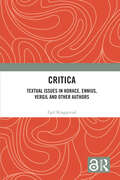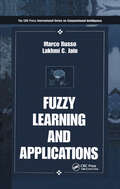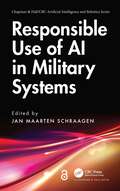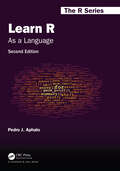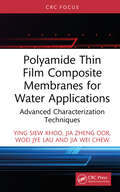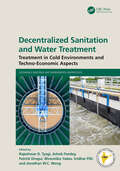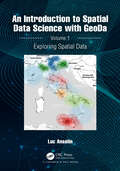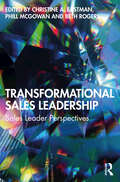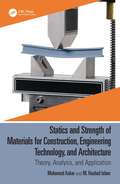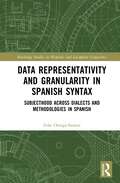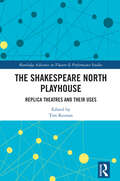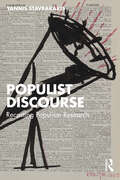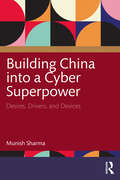- Table View
- List View
Critica: Textual Issues in Horace, Ennius, Vergil and Other Authors
by Egil KraggerudGathering together over 60 new and revised discussions of textual issues, this volume represents notorious problems in well-known texts from the classical era by authors including Horace, Ennius, and Vergil.A follow-up to Vegiliana: Critical Studies on the Texts of Publius Vergilius Maro (2017), the volume includes major contributions to the discussion of Horace’s Carmen IV 8 and IV 12, along with studies on Catullus Carmen 67 and Hadrian’s Animula vagula, as well as a new contribution on Livy’s text at IV 20 in connection with Cossus’s spolia opima, and on Vergil’s Aeneid 3. 147–152 and 11. 151–153. On Ennius, the author presents several new ideas on Ann. 42 Sk. and 220–22l, and in editing Horace, he suggests new principles for the critical apparatus and tries to find a balance by weighing both sides in several studies, comparing a conservative and a radical approach.Critica will be an important resource for students and scholars of Latin language and literature.The Open Access version of this book, available at http://www.taylorfrancis.com, has been made available under a Creative Commons Attribution-Non Commercial-No Derivatives (CC-BY-NC-ND) 4.0 license.
Fuzzy Learning and Applications (International Series on Computational Intelligence)
by Marco RussoWith low computational complexity and relatively short development time, Fuzzy Logic is an indispensable tool for engineering applications. The field is growing at an unprecedented rate, and there is a need for a book that describes essential tools, applications, examples, and perspectives in the field of fuzzy learning. The editors of Fuzzy Learni
Fuzzy Learning and Applications (International Series on Computational Intelligence #19)
by Marco RussoWith low computational complexity and relatively short development time, Fuzzy Logic is an indispensable tool for engineering applications. The field is growing at an unprecedented rate, and there is a need for a book that describes essential tools, applications, examples, and perspectives in the field of fuzzy learning. The editors of Fuzzy Learni
Responsible Use of AI in Military Systems (Chapman & Hall/CRC Artificial Intelligence and Robotics Series)
by Jan Maarten SchraagenArtificial Intelligence (AI) is widely used in society today. The (mis)use of biased data sets in machine learning applications is well‑known, resulting in discrimination and exclusion of citizens. Another example is the use of non‑transparent algorithms that can’t explain themselves to users, resulting in the AI not being trusted and therefore not being used when it might be beneficial to use it.Responsible Use of AI in Military Systems lays out what is required to develop and use AI in military systems in a responsible manner. Current developments in the emerging field of Responsible AI as applied to military systems in general (not merely weapons systems) are discussed. The book takes a broad and transdisciplinary scope by including contributions from the fields of philosophy, law, human factors, AI, systems engineering, and policy development.Divided into five sections, Section I covers various practical models and approaches to implementing military AI responsibly; Section II focuses on liability and accountability of individuals and states; Section III deals with human control in human‑AI military teams; Section IV addresses policy aspects such as multilateral security negotiations; and Section V focuses on ‘autonomy’ and ‘meaningful human control’ in weapons systems.Key Features: Takes a broad transdisciplinary approach to responsible AI Examines military systems in the broad sense of the word Focuses on the practical development and use of responsible AI Presents a coherent set of chapters, as all authors spent two days discussing each other’s work This book provides the reader with a broad overview of all relevant aspects involved with the responsible development, deployment and use of AI in military systems. It stresses both the advantages of AI as well as the potential downsides of including AI in military systems.
Responsible Use of AI in Military Systems (Chapman & Hall/CRC Artificial Intelligence and Robotics Series)
by Jan Maarten SchraagenArtificial Intelligence (AI) is widely used in society today. The (mis)use of biased data sets in machine learning applications is well‑known, resulting in discrimination and exclusion of citizens. Another example is the use of non‑transparent algorithms that can’t explain themselves to users, resulting in the AI not being trusted and therefore not being used when it might be beneficial to use it.Responsible Use of AI in Military Systems lays out what is required to develop and use AI in military systems in a responsible manner. Current developments in the emerging field of Responsible AI as applied to military systems in general (not merely weapons systems) are discussed. The book takes a broad and transdisciplinary scope by including contributions from the fields of philosophy, law, human factors, AI, systems engineering, and policy development.Divided into five sections, Section I covers various practical models and approaches to implementing military AI responsibly; Section II focuses on liability and accountability of individuals and states; Section III deals with human control in human‑AI military teams; Section IV addresses policy aspects such as multilateral security negotiations; and Section V focuses on ‘autonomy’ and ‘meaningful human control’ in weapons systems.Key Features: Takes a broad transdisciplinary approach to responsible AI Examines military systems in the broad sense of the word Focuses on the practical development and use of responsible AI Presents a coherent set of chapters, as all authors spent two days discussing each other’s work This book provides the reader with a broad overview of all relevant aspects involved with the responsible development, deployment and use of AI in military systems. It stresses both the advantages of AI as well as the potential downsides of including AI in military systems.
Learn R: As a Language (Chapman & Hall/CRC The R Series)
by Pedro J. AphaloLearning a computer language like R can be either frustrating, fun or boring. Having fun requires challenges that wake up the learner’s curiosity but also provide an emotional reward for overcoming them. The book is designed so that it includes smaller and bigger challenges, in what I call playgrounds, in the hope that all readers will enjoy their path to R fluency. Fluency in the use of a language is a skill that is acquired through practice and exploration. For students and professionals in the biological sciences, humanities and many applied fields, recognizing the parallels between R and natural languages should help them feel at home with R. The approach I use is similar to that of a travel guide, encouraging exploration and describing the available alternatives and how to reach them. The intention is to guide the reader through the R landscape of 2024 and beyond.What is new in the second edition? Text expanded by more than 25% to include additional R features and gentler and more detailed explanations Contains 24 new diagrams and flowcharts, seven new tables, and revised text and code examples for clarity All three indexes were expanded, and answers to 28 frequently asked questions added What will you find in this book? Programming concepts explained as they apply to current R Emphasis on the role of abstractions in programming Few prescriptive rules—mostly the author’s preferences together with alternatives Presentation of the R language emphasizing the “R way of doing things” Tutoring for “programming in the small” using scripts for data analysis Explanation of the differences between R proper and extensions for data wrangling The grammar of graphics is described as a language for the construction of data visualisations Examples of data exchange between R and the foreign world using common file formats Coaching to become an independent R user, capable of writing original scripts and solving future challenges
Learn R: As a Language (Chapman & Hall/CRC The R Series)
by Pedro J. AphaloLearning a computer language like R can be either frustrating, fun or boring. Having fun requires challenges that wake up the learner’s curiosity but also provide an emotional reward for overcoming them. The book is designed so that it includes smaller and bigger challenges, in what I call playgrounds, in the hope that all readers will enjoy their path to R fluency. Fluency in the use of a language is a skill that is acquired through practice and exploration. For students and professionals in the biological sciences, humanities and many applied fields, recognizing the parallels between R and natural languages should help them feel at home with R. The approach I use is similar to that of a travel guide, encouraging exploration and describing the available alternatives and how to reach them. The intention is to guide the reader through the R landscape of 2024 and beyond.What is new in the second edition? Text expanded by more than 25% to include additional R features and gentler and more detailed explanations Contains 24 new diagrams and flowcharts, seven new tables, and revised text and code examples for clarity All three indexes were expanded, and answers to 28 frequently asked questions added What will you find in this book? Programming concepts explained as they apply to current R Emphasis on the role of abstractions in programming Few prescriptive rules—mostly the author’s preferences together with alternatives Presentation of the R language emphasizing the “R way of doing things” Tutoring for “programming in the small” using scripts for data analysis Explanation of the differences between R proper and extensions for data wrangling The grammar of graphics is described as a language for the construction of data visualisations Examples of data exchange between R and the foreign world using common file formats Coaching to become an independent R user, capable of writing original scripts and solving future challenges
Polyamide Thin Film Composite Membranes for Water Applications: Advanced Characterization Techniques
by Ying Siew Khoo Jia Zheng Oor Woei Jye Lau Jia Wei ChewThe global market for polymeric membranes used in water and wastewater treatment is experiencing robust growth, with polyamide (PA) thin film composite (TFC) membranes dominating reverse osmosis (RO) and nanofiltration (NF) processes. This monograph presents the latest trends in characterization techniques for PA TFC membranes and provides the most current and relevant information on these techniques tailored specifically for TFC NF and RO membranes.Features• Focuses solely on the characterization of PA TFC membranes used in water and wastewater treatment.• Provides the latest insights into employing advanced and emerging characterization tools to analyze the intrinsic properties of the PA selective layer and evaluate the overall performance of PA TFC membranes during filtration processes.• Extensively examines the strengths and limitations of each membrane characterization tool, offering in-depth analyses for readers.This book is an indispensable reference and practical guide for advanced students, researchers, and scientists involved in NF and RO membrane fabrication and characterization, including those in the fields of chemical, materials, and environmental engineering.
Polyamide Thin Film Composite Membranes for Water Applications: Advanced Characterization Techniques
by Ying Siew Khoo Jia Zheng Oor Woei Jye Lau Jia Wei ChewThe global market for polymeric membranes used in water and wastewater treatment is experiencing robust growth, with polyamide (PA) thin film composite (TFC) membranes dominating reverse osmosis (RO) and nanofiltration (NF) processes. This monograph presents the latest trends in characterization techniques for PA TFC membranes and provides the most current and relevant information on these techniques tailored specifically for TFC NF and RO membranes.Features• Focuses solely on the characterization of PA TFC membranes used in water and wastewater treatment.• Provides the latest insights into employing advanced and emerging characterization tools to analyze the intrinsic properties of the PA selective layer and evaluate the overall performance of PA TFC membranes during filtration processes.• Extensively examines the strengths and limitations of each membrane characterization tool, offering in-depth analyses for readers.This book is an indispensable reference and practical guide for advanced students, researchers, and scientists involved in NF and RO membrane fabrication and characterization, including those in the fields of chemical, materials, and environmental engineering.
Decentralized Sanitation and Water Treatment: Treatment in Cold Environments and Techno-Economic Aspects (Sustainable Industrial and Environmental Bioprocesses)
by Rajeshwar D Tyagi Ashok Pandey Patrick Drogui Bhoomika Yadav Sridhar Pilli Wong, Jonathan W.C.This book discusses decentralized sanitation for wastewater treatment and management in cold environments. It addresses the knowledge gap that exists between the understanding of centralized and decentralized wastewater treatment approaches. Decentralized Sanitation and Water Treatment: Treatment in Cold Environments and Techno-Economic Aspects covers the sustainability principles, various technologies involved, decentralized treatment in cold countries, and the economic and social feasibility of decentralized sanitation. It provides solutions for the conservation of water sources and target-oriented sanitation approaches for wastewater treatment and recycling.Key Features Reviews the current status, challenges, and future perspectives of decentralized water treatments Discusses decentralized sanitation, water, and wastewater treatment in cold environments and Northern countries Focuses on interdisciplinary approaches of sustainability and circular economy Covers life cycle and environment assessment of decentralized sanitation systems Reviews the environmental, techno-economic, and social aspects of decentralized sanitation systems The book is meant for professionals and researchers working on wastewater treatment, environmental engineering, and ecology.
Decentralized Sanitation and Water Treatment: Treatment in Cold Environments and Techno-Economic Aspects (Sustainable Industrial and Environmental Bioprocesses)
This book discusses decentralized sanitation for wastewater treatment and management in cold environments. It addresses the knowledge gap that exists between the understanding of centralized and decentralized wastewater treatment approaches. Decentralized Sanitation and Water Treatment: Treatment in Cold Environments and Techno-Economic Aspects covers the sustainability principles, various technologies involved, decentralized treatment in cold countries, and the economic and social feasibility of decentralized sanitation. It provides solutions for the conservation of water sources and target-oriented sanitation approaches for wastewater treatment and recycling.Key Features Reviews the current status, challenges, and future perspectives of decentralized water treatments Discusses decentralized sanitation, water, and wastewater treatment in cold environments and Northern countries Focuses on interdisciplinary approaches of sustainability and circular economy Covers life cycle and environment assessment of decentralized sanitation systems Reviews the environmental, techno-economic, and social aspects of decentralized sanitation systems The book is meant for professionals and researchers working on wastewater treatment, environmental engineering, and ecology.
An Introduction to Spatial Data Science with GeoDa: Volume 1: Exploring Spatial Data
by Luc AnselinThis book is the first in a two-volume series that introduces the field of spatial data science. It offers an accessible overview of the methodology of exploratory spatial data analysis. It also constitutes the definitive user’s guide for the widely adopted GeoDa open-source software for spatial analysis. Leveraging a large number of real-world empirical illustrations, readers will gain an understanding of the main concepts and techniques, using dynamic graphics for thematic mapping, statistical graphing, and, most centrally, the analysis of spatial autocorrelation. Key to this analysis is the concept of local indicators of spatial association, pioneered by the author and recently extended to the analysis of multivariate data.The focus of the book is on intuitive methods to discover interesting patterns in spatial data. It offers a progression from basic data manipulation through description and exploration to the identification of clusters and outliers by means of local spatial autocorrelation analysis. A distinctive approach is to spatialize intrinsically non-spatial methods by means of linking and brushing with a range of map representations, including several that are unique to the GeoDa software. The book also represents the most in-depth treatment of local spatial autocorrelation and its visualization and interpretation by means of GeoDa.The book is intended for readers interested in going beyond simple mapping of geographical data to gain insight into interesting patterns. Some basic familiarity with statistical concepts is assumed, but no previous knowledge of GIS or mapping is required.Key Features:• Includes spatial perspectives on cluster analysis• Focuses on exploring spatial data• Supplemented by extensive support with sample data sets and examples on the GeoDaCenter websiteThis book is both useful as a reference for the software and as a text for students and researchers of spatial data science.Luc Anselin is the Founding Director of the Center for Spatial Data Science at the University of Chicago, where he is also the Stein-Freiler Distinguished Service Professor of Sociology and the College, as well as a member of the Committee on Data Science. He is the creator of the GeoDa software and an active contributor to the PySAL Python open-source software library for spatial analysis. He has written widely on topics dealing with the methodology of spatial data analysis, including his classic 1988 text on Spatial Econometrics. His work has been recognized by many awards, such as his election to the U.S. National Academy of Science and the American Academy of Arts and Science.
An Introduction to Spatial Data Science with GeoDa: Volume 1: Exploring Spatial Data
by Luc AnselinThis book is the first in a two-volume series that introduces the field of spatial data science. It offers an accessible overview of the methodology of exploratory spatial data analysis. It also constitutes the definitive user’s guide for the widely adopted GeoDa open-source software for spatial analysis. Leveraging a large number of real-world empirical illustrations, readers will gain an understanding of the main concepts and techniques, using dynamic graphics for thematic mapping, statistical graphing, and, most centrally, the analysis of spatial autocorrelation. Key to this analysis is the concept of local indicators of spatial association, pioneered by the author and recently extended to the analysis of multivariate data.The focus of the book is on intuitive methods to discover interesting patterns in spatial data. It offers a progression from basic data manipulation through description and exploration to the identification of clusters and outliers by means of local spatial autocorrelation analysis. A distinctive approach is to spatialize intrinsically non-spatial methods by means of linking and brushing with a range of map representations, including several that are unique to the GeoDa software. The book also represents the most in-depth treatment of local spatial autocorrelation and its visualization and interpretation by means of GeoDa.The book is intended for readers interested in going beyond simple mapping of geographical data to gain insight into interesting patterns. Some basic familiarity with statistical concepts is assumed, but no previous knowledge of GIS or mapping is required.Key Features:• Includes spatial perspectives on cluster analysis• Focuses on exploring spatial data• Supplemented by extensive support with sample data sets and examples on the GeoDaCenter websiteThis book is both useful as a reference for the software and as a text for students and researchers of spatial data science.Luc Anselin is the Founding Director of the Center for Spatial Data Science at the University of Chicago, where he is also the Stein-Freiler Distinguished Service Professor of Sociology and the College, as well as a member of the Committee on Data Science. He is the creator of the GeoDa software and an active contributor to the PySAL Python open-source software library for spatial analysis. He has written widely on topics dealing with the methodology of spatial data analysis, including his classic 1988 text on Spatial Econometrics. His work has been recognized by many awards, such as his election to the U.S. National Academy of Science and the American Academy of Arts and Science.
Transformational Sales Leadership: Sales Leader Perspectives
by Christine A. Eastman Phill McGowan Beth RogersTransformational Sales Leadership: Sales Leader Perspectives offers viewpoints from 12 leaders across the global sales industry, all of which challenge conventional sales models and promote visionary ways of thinking about sales and leadership.The leaders who share their professional stories in the book are from organizations including SAP, Google, Nationwide US, and Royal Caribbean, as well as their own practices, and they represent a new breed of salespeople who are increasingly sought after by organizations which need to transform their practices. They run teams, drive analytics, and improve operational excellence, and their careers rise or fall on getting the right KPIs. Their stories address solutions to age-old sales problems, but they bring a new perspective to the sales function in the digital age. The book focuses on what sales leaders need in order to be innovative. Specifically, the book shows you how to:• Coach sales people through disruption;• Leverage the most valuable habits for success; and• Provide for meaning and purpose in the hyper-connected and volatile sales industry.If you are a sales professional looking to succeed in challenging scenarios, the journeys recounted in this book demonstrate how the landscape of sales has changed and how thinking about sales differently can help you transform your career.
Transformational Sales Leadership: Sales Leader Perspectives
by Christine A. Eastman Phill McGowan Beth RogersTransformational Sales Leadership: Sales Leader Perspectives offers viewpoints from 12 leaders across the global sales industry, all of which challenge conventional sales models and promote visionary ways of thinking about sales and leadership.The leaders who share their professional stories in the book are from organizations including SAP, Google, Nationwide US, and Royal Caribbean, as well as their own practices, and they represent a new breed of salespeople who are increasingly sought after by organizations which need to transform their practices. They run teams, drive analytics, and improve operational excellence, and their careers rise or fall on getting the right KPIs. Their stories address solutions to age-old sales problems, but they bring a new perspective to the sales function in the digital age. The book focuses on what sales leaders need in order to be innovative. Specifically, the book shows you how to:• Coach sales people through disruption;• Leverage the most valuable habits for success; and• Provide for meaning and purpose in the hyper-connected and volatile sales industry.If you are a sales professional looking to succeed in challenging scenarios, the journeys recounted in this book demonstrate how the landscape of sales has changed and how thinking about sales differently can help you transform your career.
Statics and Strength of Materials for Construction, Engineering Technology, and Architecture: Theory, Analysis, and Application
by Mohamed Askar M. Rashad IslamStatics and Strength of Materials for Construction, Engineering Technology, and Architecture: Theory, Analysis, and Application provides students and industry professionals with the necessary statics and strength of materials background for more innovative approaches to particular fields of engineering technology, construction engineering and management, civil engineering, and architectural technology. It presents an introduction to statics, a review of algebra and trigonometry, concepts of vectors, a classification of building structural systems, an overview of advanced topics in statics and strength of materials, and frameworks of real-world application projects.This book contains 19 chapters and discusses several topics related to statics and strength of materials, such as coplanar force systems; the equilibrium of particle and rigid bodies; design loads; beam and frame reactions; trusses; arches, cables, and pulleys; space force systems; centroid of areas; moment of inertia; friction; properties of materials; axial deformation; bending and shear stress; torsional stress; combined loading; stress transformation; deflection; and stress in columns.Each chapter includes an Instructor’s Solution Manual and Guide with instructional materials and comprehensive explanations of the related practice problems, critical thinking exercises, and application projects.
Data Representativity and Granularity in Spanish Syntax: Subjecthood across Dialects and Methodologies in Spanish (Routledge Studies in Hispanic and Lusophone Linguistics)
by Iván Ortega-SantosData Representativity and Granularity in Spanish Syntax focuses on the dialogue between Generative Grammar, Variationism, and experimental linguistics with a unique emphasis on Spanish linguistics.Combining formal syntax and empirical data collection, this volume analyzes and compares various data collection methods in syntactic theory, and examines a wide variety of approaches to gain novel insight in this emerging area. Through the case study of subject properties in Spanish, with an emphasis on how differences in data collection and data analysis standards may shape our perception of the object of study, this book addresses the following questions: (a) How do the data gathered through the standard methodology in each discipline diverge (if at all) and why? and (b) What kind of research questions can be answered with the standard methodology in each field? The volume argues for methodological crosspollination to avoid forcing data to conform to field-specific expectations and to appreciate language variation for what it has to tell us about linguistic theory, marrying the goals of Generative Grammar with data-driven research.This is an essential resource for researchers in the area of formal and generative syntax, linguists with an interest in data collection standard in syntax, and graduate or advanced undergraduate students in the field of Spanish linguistics.
Data Representativity and Granularity in Spanish Syntax: Subjecthood across Dialects and Methodologies in Spanish (Routledge Studies in Hispanic and Lusophone Linguistics)
by Iván Ortega-SantosData Representativity and Granularity in Spanish Syntax focuses on the dialogue between Generative Grammar, Variationism, and experimental linguistics with a unique emphasis on Spanish linguistics.Combining formal syntax and empirical data collection, this volume analyzes and compares various data collection methods in syntactic theory, and examines a wide variety of approaches to gain novel insight in this emerging area. Through the case study of subject properties in Spanish, with an emphasis on how differences in data collection and data analysis standards may shape our perception of the object of study, this book addresses the following questions: (a) How do the data gathered through the standard methodology in each discipline diverge (if at all) and why? and (b) What kind of research questions can be answered with the standard methodology in each field? The volume argues for methodological crosspollination to avoid forcing data to conform to field-specific expectations and to appreciate language variation for what it has to tell us about linguistic theory, marrying the goals of Generative Grammar with data-driven research.This is an essential resource for researchers in the area of formal and generative syntax, linguists with an interest in data collection standard in syntax, and graduate or advanced undergraduate students in the field of Spanish linguistics.
Statics and Strength of Materials for Construction, Engineering Technology, and Architecture: Theory, Analysis, and Application
by Mohamed Askar M. Rashad IslamStatics and Strength of Materials for Construction, Engineering Technology, and Architecture: Theory, Analysis, and Application provides students and industry professionals with the necessary statics and strength of materials background for more innovative approaches to particular fields of engineering technology, construction engineering and management, civil engineering, and architectural technology. It presents an introduction to statics, a review of algebra and trigonometry, concepts of vectors, a classification of building structural systems, an overview of advanced topics in statics and strength of materials, and frameworks of real-world application projects.This book contains 19 chapters and discusses several topics related to statics and strength of materials, such as coplanar force systems; the equilibrium of particle and rigid bodies; design loads; beam and frame reactions; trusses; arches, cables, and pulleys; space force systems; centroid of areas; moment of inertia; friction; properties of materials; axial deformation; bending and shear stress; torsional stress; combined loading; stress transformation; deflection; and stress in columns.Each chapter includes an Instructor’s Solution Manual and Guide with instructional materials and comprehensive explanations of the related practice problems, critical thinking exercises, and application projects.
The Shakespeare North Playhouse: Replica Theatres and Their Uses (ISSN)
by Tim KeenanThis collection celebrates the opening of the Shakespeare North Playhouse (SNP). After discussion of its genesis and development by four people pivotal to its progress at different stages of the project, this book explores different aspects of the SNP’s purpose and functions across three broad categories: buildings and spaces, practices and performance, and community arts and education. Various chapters offer answers to fundamental questions about replica theatres, including: Why do we build them? What do they do? How do we use them? In the course of these discussions, the purposes, potential, and programming of the SNP are discussed in relation to other Globe-type replicas in the UK and beyond. Contributors to this collection analyse key academic and practice-based concerns within their fields of expertise connected to the use (and misuse) of replica theatres to suggest the ways in which they can be used to drive research and practice in contemporary Shakespearean performance, connect with young people, and serve local communities.This book will appeal to academics, students, and practitioners interested in historical and contemporary approaches to Shakespeare in the fields covered. It should also appeal to general readers with an interest in the topics, particularly in Merseyside and the North-West region.
Populist Discourse: Recasting Populism Research
by Yannis StavrakakisPopulist Discourse: Recasting Populism Research offers a refreshingly innovative discourse theory perspective on populist phenomena. Reading this book will help you familiarize yourself with the historical genealogy of significant populist phenomena from the end of the 19th century onwards and with the main conceptual/theoretical accounts established to analyse them. Mainstream conceptualizations of populism in both academia and public discourse are critically discussed in order to map new, promising avenues for research. Inspired by the works of Ernesto Laclau and Chantal Mouffe, the book addresses current challenges within populism research and highlights the new directions that a conceptually nuanced, theoretically rigorous and historically informed discursive orientation can contribute to the contemporary study of populism. Without sacrificing attention to detail, strong bibliographical support and a focus on the future development of populism research, Populist Discourse is written in accessible language to engage populism scholars, advanced undergraduates and graduate-level students within the field of political science. Due to its interdisciplinary character, it will also appeal to readers associated with various politically informed area studies and the broader field of ideology and discourse analysis.
The Shakespeare North Playhouse: Replica Theatres and Their Uses (ISSN)
This collection celebrates the opening of the Shakespeare North Playhouse (SNP). After discussion of its genesis and development by four people pivotal to its progress at different stages of the project, this book explores different aspects of the SNP’s purpose and functions across three broad categories: buildings and spaces, practices and performance, and community arts and education. Various chapters offer answers to fundamental questions about replica theatres, including: Why do we build them? What do they do? How do we use them? In the course of these discussions, the purposes, potential, and programming of the SNP are discussed in relation to other Globe-type replicas in the UK and beyond. Contributors to this collection analyse key academic and practice-based concerns within their fields of expertise connected to the use (and misuse) of replica theatres to suggest the ways in which they can be used to drive research and practice in contemporary Shakespearean performance, connect with young people, and serve local communities.This book will appeal to academics, students, and practitioners interested in historical and contemporary approaches to Shakespeare in the fields covered. It should also appeal to general readers with an interest in the topics, particularly in Merseyside and the North-West region.
Populist Discourse: Recasting Populism Research
by Yannis StavrakakisPopulist Discourse: Recasting Populism Research offers a refreshingly innovative discourse theory perspective on populist phenomena. Reading this book will help you familiarize yourself with the historical genealogy of significant populist phenomena from the end of the 19th century onwards and with the main conceptual/theoretical accounts established to analyse them. Mainstream conceptualizations of populism in both academia and public discourse are critically discussed in order to map new, promising avenues for research. Inspired by the works of Ernesto Laclau and Chantal Mouffe, the book addresses current challenges within populism research and highlights the new directions that a conceptually nuanced, theoretically rigorous and historically informed discursive orientation can contribute to the contemporary study of populism. Without sacrificing attention to detail, strong bibliographical support and a focus on the future development of populism research, Populist Discourse is written in accessible language to engage populism scholars, advanced undergraduates and graduate-level students within the field of political science. Due to its interdisciplinary character, it will also appeal to readers associated with various politically informed area studies and the broader field of ideology and discourse analysis.
Building China into a Cyber Superpower: Desires, Drivers, and Devices
by Munish SharmaThis book provides a comprehensive look into China’s emerging cyberspace strategy. It highlights the prime drivers of China’s desire to be a cyber superpower and discusses the ways in which China is turning resources into cyber power.The book analyses China’s domestic cyber policy initiatives, strategy documents, censorship measures, and the rationale behind its strong advocacy for sovereignty in cyberspace. It examines China’s position on the prominent issues of cyberspace governance, norms and security in cyberspace, and key diplomatic initiatives. The book also discusses next-generation networks, artificial intelligence, quantum information sciences, and cyber warfare.An important contribution to the study of China’s cyber policy, the book will be of interest to students and researchers of international relations,Chinese digitalisation, security studies, Chinese politics, international security, Chinese foreign policy, and Chinese economy. It will also be useful to the policymakers and corporate professionals engaged with China’s digital sphere.
Building China into a Cyber Superpower: Desires, Drivers, and Devices
by Munish SharmaThis book provides a comprehensive look into China’s emerging cyberspace strategy. It highlights the prime drivers of China’s desire to be a cyber superpower and discusses the ways in which China is turning resources into cyber power.The book analyses China’s domestic cyber policy initiatives, strategy documents, censorship measures, and the rationale behind its strong advocacy for sovereignty in cyberspace. It examines China’s position on the prominent issues of cyberspace governance, norms and security in cyberspace, and key diplomatic initiatives. The book also discusses next-generation networks, artificial intelligence, quantum information sciences, and cyber warfare.An important contribution to the study of China’s cyber policy, the book will be of interest to students and researchers of international relations,Chinese digitalisation, security studies, Chinese politics, international security, Chinese foreign policy, and Chinese economy. It will also be useful to the policymakers and corporate professionals engaged with China’s digital sphere.
